Improving Tristan's cattle herd
Information from Agricultural Advisor Alasdair Wyllie & Vet Joe Hollins
Photos from the Tourism Department and visitor Bernard Pronost
Cattle are important to the island economy, but with limited areas of pasture, overgrazing has been a problem for many years, and there are strict limits on the number of cattle each family can own. The island has faced a worsening situation, especially during the winter. Consequently, the Island Council has recently made the brave but necessary decision to reduce the quota from two breeding cows per household to one, effective the end of April 2019. This should substantially reduce the size of the island herd over the next three years and allow the grassland to recover.
Coupled with this decision, Tristan is seeking to improve the bloodstock its cattle herd through a combination of artificial insemination (AI) of local cows with imported semen, and by importing new breeding bulls. The Agriculture Department is also taking steps to improve the quality of the pastures by reseeding with new grasses and by applying fertiliser and lime.
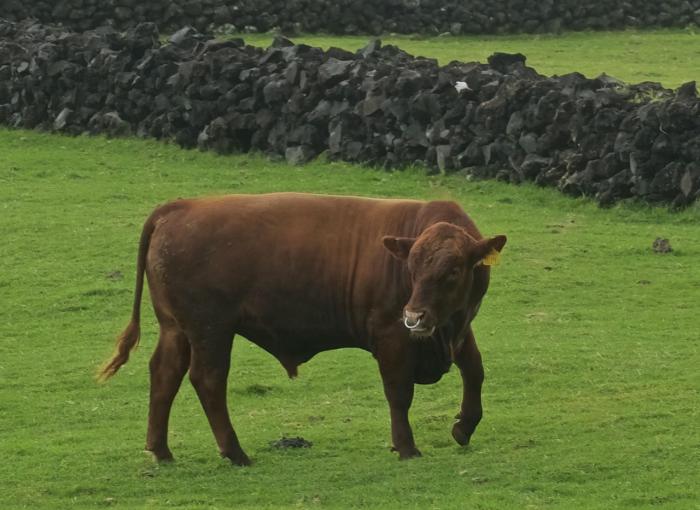
An AI programme was carried out in the early part of this year, using semen from four breeds - Aberdeen Angus, Welsh Black, Red Poll and Hereford. The decision has been made to retain crossbred bull calves from the Welsh Black and the Red Poll breeds. Several AI calves have been born in recent weeks. There have been fewer heifers born than was hoped, but the primary aim is to get a couple of good breeding males. Meanwhile, two new pedigree Aberdeen Angus bulls arrived on the 6th November 2017, one red and one black, from breeder Klasie Loubser of South Africa. All these 'native breeds' should produce cattle better suited to conditions on Tristan.
The bulls were transported to Tristan on the MV Baltic Trader in a specially adapted shipping container fitted with bull pens at either end. They were safely ferried ashore on the raft in their shipping container during a tricky operation, but the bulls positively frolicked with joy when they were finally released. They now have a field of their own, where they can rest and build up their strength ready for the breeding season in February.
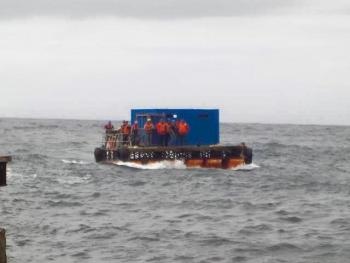 |
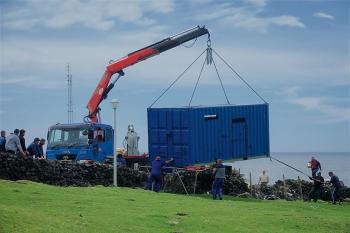 |
| The bulls are ferried ashore in their container on the cargo raft. | |
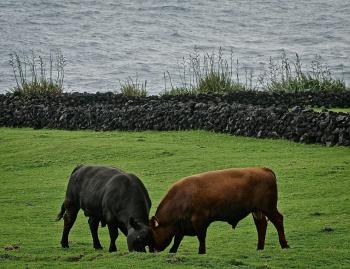 |
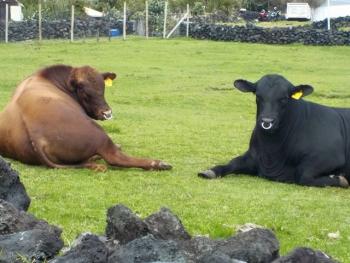 |
| The bulls grazing and resting after their voyage. | |
More detailed information about current farming developments can be found on Alasdair's blog: http://www.penguins-and-potatoes.co.uk/.
